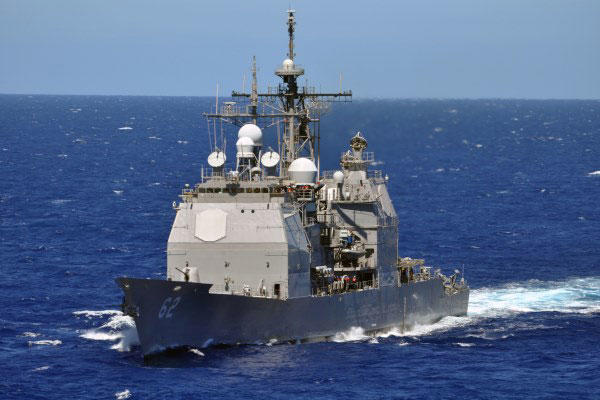U.S. Navy leaders' plans to forward deploy two more destroyers to Japan and base another attack submarine in Guam appear to be part of a new maritime strategy expected to be released by the Navy next month.
While most of the details of the new strategy for the Navy, Marines and Coast Guard will not yet be discussed by Navy officials, the effort does include a new examination of the sea-services' ability to forward deploy and project power in global hotspots such as the Pacific theater and Middle East.
"The sea services have updated the maritime strategy in response to changes in the global security environment, new strategic guidance and a changed fiscal environment," said Lt. Timothy Hawkins, a Navy spokesman, told Military.com.
The new maritime strategy, called "A Cooperative Strategy for 21st Century Seapower: Forward Engaged Ready," will provide a comprehensive overview and build upon Navy priorities such as the need for deterrence, Hawkins explained.
"The principles of our maritime strategy largely remain the same from 2007. It continues to prioritize and value forward presence while emphasizing the continued need for the primary functions of a maritime service which are – deterrence, power projection, sea-control and maritime security," he said.
While Navy officials did not specify whether the new strategy takes up the issue of the Pentagon's Pacific rebalance, officials told Military.com that the document does address the challenges maritime forces face when it comes to accessing and operating in more "contested" environments.
Regarding the Pacific rebalance, Hawkins did re-iterate that the Navy plans to base as much as 60-percent of its fleet in the Pacific region by 2020.
Also, speaking Feb. 26 before the House Appropriations Committee – Defense subcommittee hearing on the Navy budget, Chief of Naval Operations Adm. Jonathan Greenert made reference to the Navy's ongoing push to rebalance to the Pacific.
Greenert said the Navy's force of attack submarines based in Guam will be increased this year. He also made reference to the fact that two additional destroyers will be forward deployed to Japan.
By the end of this year, the number of attack submarines the Navy rotates through Guam will jump from three to four, service officials said. Also, the Navy's aegis-capable a guided missile cruiser, the USS Chancellorsville, will rotate through Japan by the end of 2015, service officials said.
At the moment, the Navy operates one carrier, seven destroyers, four mine-sweeping vessels, two cruisers and six amphibious ships from Japan, Hawkins said.
In addition, the Navy has included the rotation of Littoral Combat Ships through Singapore, the deployment of the P-8 surveillance plane and a rotation of Marines through Australia as portions of the Pacific rebalance.
"We have the USS Fort Worth Littoral Combat Ship on deployment over there out of Singapore. When she completes a 16-month deployment, the next ship that comes over will stay. Then another will join and then two more -- so we will have four Littoral Combat Ships by the end of 2017 in Singapore," Greenert told lawmakers.
The Chief of Naval Operations also detailed plans to base the Navy's carrier-based variant of the Joint Strike Fighter, the F-35C, in the Pacific region.
"Our Joint Strike Fighter will deploy to the Western Pacific by the end of this decade. So you see the trend we are putting all the forces out there, either forward stationed or they will deploy there first," Greenert added.
Naval threat assessments and technology development have also squarely been aimed at preparing the force to operate in the Pacific theater, Greenert explained to lawmakers.
"We have benchmarked anti-air, anti-submarine, electronic attack and cyber all to how they would perform in the Western Pacific against potential adversaries out there," he said.
Greenert also said U.S. relations with allies in the region remained strong, citing Malaysia, Indonesia, Singapore, the Philippines and Vietnam. He also added that new partnership opportunities were emerging with India.
-- Kris Osborn can be reached at kris.osborn@military.com























